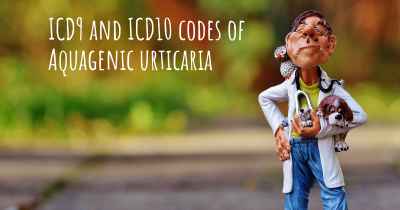4
How is Aquagenic urticaria diagnosed?
See how Aquagenic urticaria is diagnosed. Which specialists are essential to meet, what tests are needed and other useful information for the diagnosis of Aquagenic urticaria

A water test is done by a professional medical facility such as York Hospital, Hershey Hospital, John Hopkins, and many more.
Posted Sep 16, 2017 by Paige 2000
A diagnosis of Aquagenic Urticaria may involve the following tests and examinations:
Physical examination of the skin and medical history evaluation
Skin allergy test
Radioallergosorbent (RAS) test; to determine the specific allergy-causing substance
Water challenge test, which is a specific test undertaken for Aquagenic Urticaria
Tests to exclude other forms of physical/inducible urticaria
Blood test to detect various antibodies against allergens including:
Complete blood count (CBC) including eosinophil count since, there may be increased number of eosinophils (peripheral eosinophilia)
Antinuclear antibody (ANA) test
Erythrocyte sedimentation rate (ESR) test
Immunoglobulin E (IgE) levels in blood
Serum level of complement
Serum C-reactive protein blood test
Tests to rule-out other underlying autoimmune conditions and infections (if necessary)
Skin biopsy (if necessary): A skin biopsy is performed and sent to a laboratory for a pathological examination. The pathologist examines the biopsy under a microscope. After putting together clinical findings, special studies on tissues (if needed) and with microscope findings, the pathologist arrives at a definitive diagnosis
A differential diagnosis may be considered to eliminate certain skin conditions, prior to arriving at a definitive diagnosis
Physical examination of the skin and medical history evaluation
Skin allergy test
Radioallergosorbent (RAS) test; to determine the specific allergy-causing substance
Water challenge test, which is a specific test undertaken for Aquagenic Urticaria
Tests to exclude other forms of physical/inducible urticaria
Blood test to detect various antibodies against allergens including:
Complete blood count (CBC) including eosinophil count since, there may be increased number of eosinophils (peripheral eosinophilia)
Antinuclear antibody (ANA) test
Erythrocyte sedimentation rate (ESR) test
Immunoglobulin E (IgE) levels in blood
Serum level of complement
Serum C-reactive protein blood test
Tests to rule-out other underlying autoimmune conditions and infections (if necessary)
Skin biopsy (if necessary): A skin biopsy is performed and sent to a laboratory for a pathological examination. The pathologist examines the biopsy under a microscope. After putting together clinical findings, special studies on tissues (if needed) and with microscope findings, the pathologist arrives at a definitive diagnosis
A differential diagnosis may be considered to eliminate certain skin conditions, prior to arriving at a definitive diagnosis
Posted Jul 30, 2018 by Ronja Danekilde Godtfredsen 2500
Skin tests can be done and sometimes the doctors can build up enough data so just diagnose you without any tests. I mean, with the symptoms, in my case there was nothing else it could be. Aquagenic Urticaria was our only answer.
Posted Feb 13, 2019 by Lindsey 3500
Allergy test from an allergist along with a blood test.
Posted Mar 31, 2019 by Suki 1200








